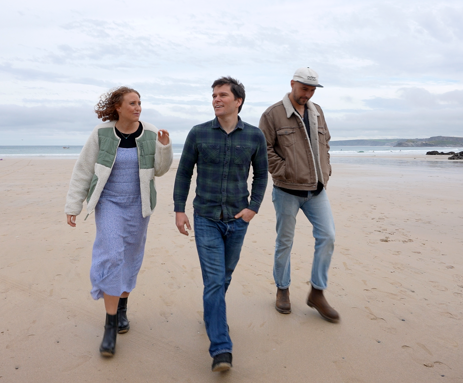Three simple rules that make a good website for users
A good website’s not about flashy designs or clever effects. Essentially, it’s about keeping things simple, and making sure you’re removing any roadblocks along the way, so users get the best experience.
When we’re building websites here at Buzz, we’re focused on creating a site that’s functional, intuitive and reflects your brand in an authentic way. And, while there are countless best practices in web design, we believe there are three core principles that will ensure the experience you offer users is genuinely useful.

1. CLEAR NAVIGATION
First off, have clear navigation. We always work with our clients to make sure they’ve sketched out their audience into distinct categories before we get down to the build, so we can structure the navigation with their pathways in mind and get them to what they need with ease (for example, potential customers and returning clients). Once you’ve identified these user groups, build your navigation around their needs. By having a simple navigation tree based on these categories, you can ensure content is placed where users would intuitively expect to find it.
It’s also important to avoid overwhelming them with too many menu options or vague labels, keeping it clear and relevant. When navigation is intuitive, users feel more in control - and that means they’re more likely to stay on your site and take action!

2. CONSISTENT BRAND GUIDELINES
Your website is an extension of your brand, so it should look and feel like it belongs to your company, with a consistent visual identity across all pages. One of the biggest mistakes businesses make is going ‘off-brand’ by using extra colours or design styles that don’t align with their established guidelines.
A consistent look builds trust and helps keep your brand defined. When a website doesn’t follow the brand’s visual language? It can feel untrustworthy or unprofessional to users. We get around this by avoiding introducing new colours, styles, or unnecessary animations, as this can confuse users and make the site feel disjointed. By sticking to your colour palette and design rules, you’ll create a cohesive experience across every page.

3. CALLS TO ACTION
Every page on your website should be built with purpose. Once a user reads something, consider what they should do next. Whether it’s signing up for a newsletter, contacting you, making a purchase, or simply reading another article, a clear call to action (CTA) is what moves them along that journey (and towards conversion).
Our advice? Start by defining what you want to achieve. Think about the value of the page, and what action you want users to take once they’ve read it. Every piece of content should support that goal, and strong, consistent CTAs will help guide the user to achieving them for you.
KEEP IT SIMPLE WITH BUZZ
These core principles all narrow down to one thing - keeping it simple. While it can be tempting to add animations, fun transitions, multiple pages with similar information, or new colours to draw users in, if they don’t serve a clear purpose? They’ll just get in the way.
Here at Buzz, we’ve developed our very own block-based system on Orchard Core (read about that here), which is completely focused on helping our clients stay consistent when running a website day-to-day. The point is allowing content editors and backend teams to build pages that stay within brand guidelines, maintain clear navigation, and always include purposeful CTAs, so your users never feel lost.
Stick to these principles, and you’ll be well on your way to building an effective user experience, without the faff.
Work with us
If you’re ready to start talking about how we can help you create a better website experience for your users, get in touch and we’ll help you get started with our free, initial call.










